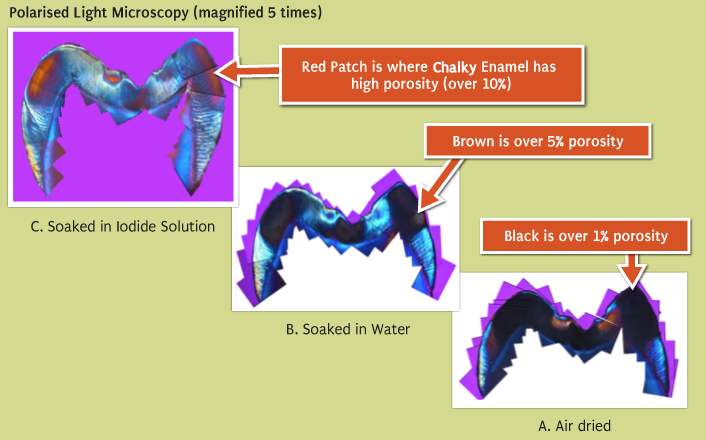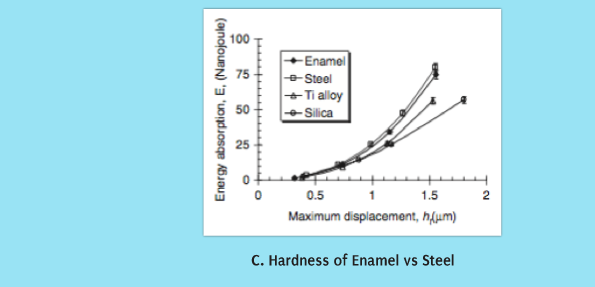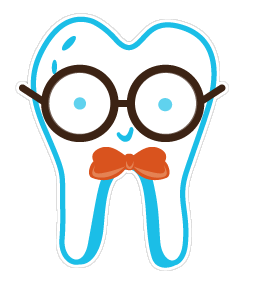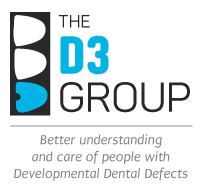TRICKIER MISSING BRICKS
Porosity of Chalky Enamel
"Missing Bricks" make the Chalky Enamel More Porous than normal

POLARISED LIGHT MICROSCOPY
This Biophysical Test lets us measure how POROUS the enamel is, as follows:
A. When the enamel slice is dry (i.e. the pores are full of air), Normal Enamel appears Blue and Porous Enamel appears Black – that is, where there is more than 1% Porosity. In this specimen, towards the bottom you can see there is still some Normal Enamel with less than 1% Porosity.
B. When the enamel slice is soaked to fill the pores with water, Porous Enamel now appears Brown – that is, where there is more than 5% Porosity.
C. When the enamel slice is soaked in a dense solution of Iodide, Porous Enamel now appears Red – that is, where there is more than 10% Porosity. So these Red Patches are the Wonkiest Part of this tooth.
WHAT THIS MEANS FOR MOLAR HYPOMIN AND THE D3 GROUP
- By soaking Enamel in different liquids, D3 Researchers can map how Porosity varies across different patches of Chalky Enamel
- Understanding Porosity better will help Researchers understand why some chalky teeth are painful, and will help Dentists provide better treatments and care
Softness of Chalky Enamel
"Missing Bricks" also make the Chalky Enamel SOFTER than normal
Indentation Test for Hardness


INDENTATION TEST
This Biophysical Test lets Researchers measure how HARD the enamel is, as follows:
A. A heavy weight with a sharp diamond point (Indenter) is allowed to sit on the surface to be tested
B. The depression (Indentation) left in the enamel is then measured under a microscope. It's no surprise that the harder the substance tested, the shallower the indentation.
C. By comparing Indentation sizes, it can be calculated that Normal Enamel has similar hardness properties to Steel and Titanium.

WHAT THIS MEANS FOR MOLAR HYPOMIN AND THE D3 GROUP
- When done on Chalky Enamel, this sort of test shows HUGE differences in hardness from Normal Enamel (often over 80% softer)
- D3 Researchers are using these tests to investigate some unexplained properties of Chalky Enamel (e.g. the softness is much greater than expected, considering that only about 15% of the mineral is typically missing (see More About X-Rays)
WANT TO LEARN MORE?
- Polarised Light Microscopy
- Hardness Testing
- Mike Swain's Group and recent article
- Felicity Crombie's Research
IMAGE CREDITS
- PLM images courtesy of Felicity Crombie
- Indentation image and data courtesy of Mike Swain

